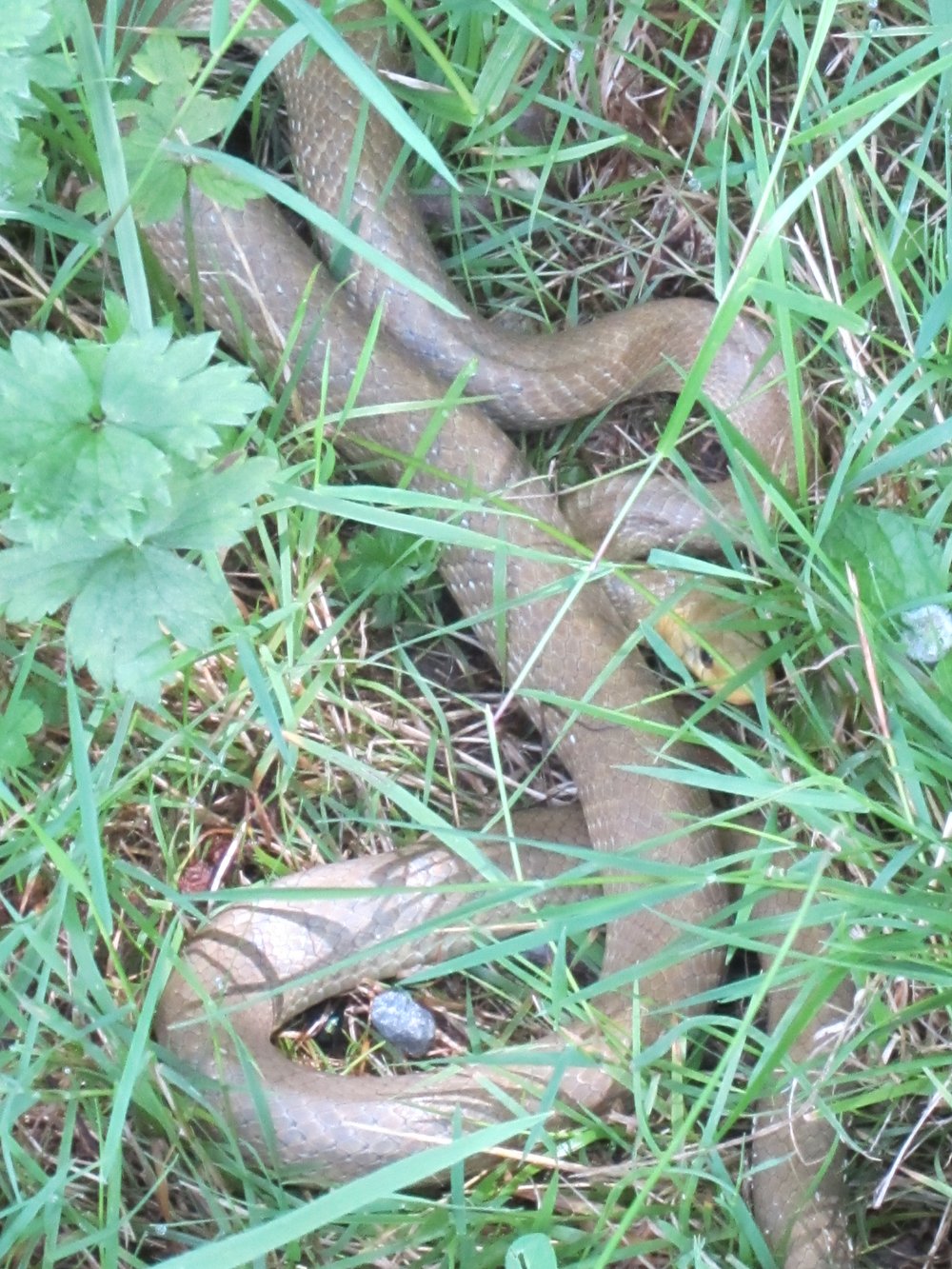Post-Irene Paddle
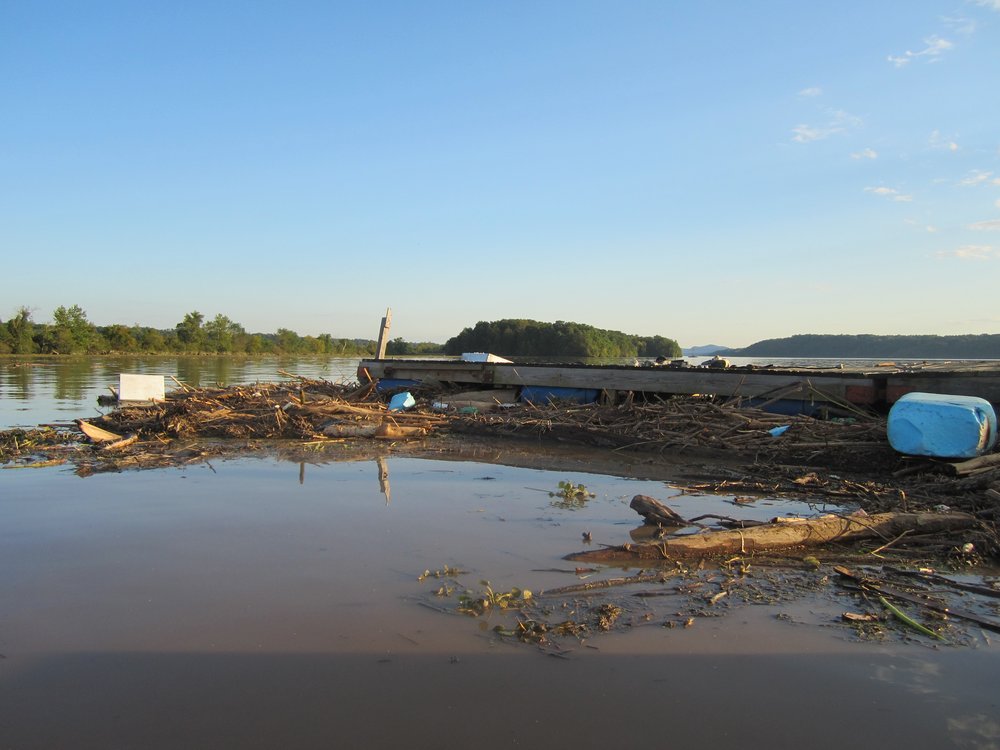
I stepped into my boat, noting the cold at my ankles was not the fall-warmed water of a few days earlier. I struck south, passing a wooden dock, sloshed up on shore. Swallows zipped across the water and landed on the wires next to the train tracks. A great blue heron took flight. In many ways, it was just another day for the birds, and for the baby map turtle I saw taking in the last of the day’s sun. But for me, the river was transformed. I recognized everything: the Catskill mountains in the distance, the puff of trees in front of me that is Magdalen Island, the houses on shore that peer down at the river. But the texture of the river was foreign. There was a sense of dereliction, I want to say of lawlessness. It was as if the river itself was not following its own laws, but also that those who live in and on the river had given over to new ways of being, one where anything could and did float off in the river.

I stepped into my boat, noting the cold at my ankles was not the fall-warmed water of a few days earlier. I struck south, passing a wooden dock, sloshed up on shore. Swallows zipped across the water and landed on the wires next to the train tracks. A great blue heron took flight. In many ways, it was just another day for the birds, and for the baby map turtle I saw taking in the last of the day’s sun. But for me, the river was transformed. I recognized everything: the Catskill mountains in the distance, the puff of trees in front of me that is Magdalen Island, the houses on shore that peer down at the river. But the texture of the river was foreign. There was a sense of dereliction, I want to say of lawlessness. It was as if the river itself was not following its own laws, but also that those who live in and on the river had given over to new ways of being, one where anything could and did float off in the river.
The raft of logs and sticks laced with debris was so thick at the entrance to the north Tivoli Bay that I could hardly shove my way through. The water poured out of the narrow entrance to the Bay, pushing me quickly south. There, just a hundred yards off of Magdalen Island was a small island of river junk. A long wooden dock. A large refrigerator and a small refrigerator both knocked against the wood. A pile of sneakers stacked on top of one end of the dock. On the far end, a submerged motorboat, engine still attached was lashed to dock. It too had been dragged south.

So I headed south, seeing a brilliant orange red scarlet tanager in the late day sun, several king birds, and a kingfisher. I thought I might scoot into the North Bay from the southern entrance. But the water there, which I know to be sweet, often placid, was so fast, so violent I knew I couldn’t make my way against the current. So I headed north, taking to the river side of Magdalen Island.

Why I Love a Storm
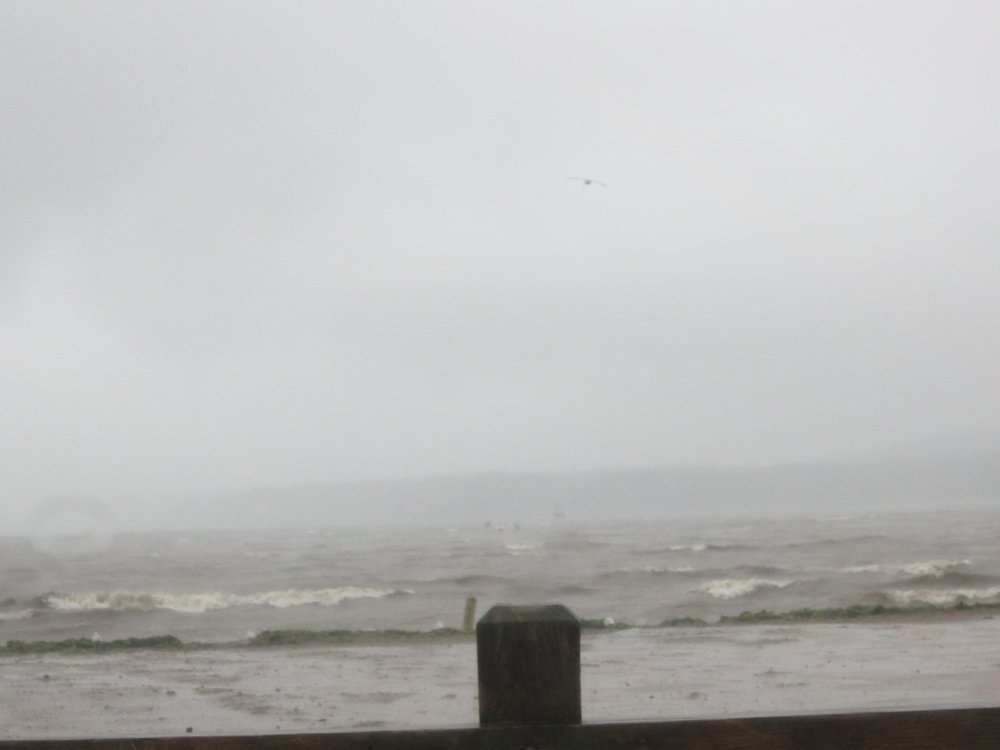 At six thirty in the evening my young friends Sasha and Liza knock on my door. I have a headlamp attached to my forehead to guide me in making dinner, something exciting like rice and beans. “We’re collecting food that might go bad and making dinner at the bar,” Sasha explains. The bar has gas burners so they can still cook. Many have electric powered stoves so they are out of luck. We are not supposed to have power for the next two to three days so things will no doubt start to turn in the fridge. It’s a great idea. But I have almost nothing in my fridge. So I take them out to my garden and give them tomatoes and chard, some basil. Who knows what they will cook up, but I love that what they want to do is feed everyone after a long day of wind and rain.
At six thirty in the evening my young friends Sasha and Liza knock on my door. I have a headlamp attached to my forehead to guide me in making dinner, something exciting like rice and beans. “We’re collecting food that might go bad and making dinner at the bar,” Sasha explains. The bar has gas burners so they can still cook. Many have electric powered stoves so they are out of luck. We are not supposed to have power for the next two to three days so things will no doubt start to turn in the fridge. It’s a great idea. But I have almost nothing in my fridge. So I take them out to my garden and give them tomatoes and chard, some basil. Who knows what they will cook up, but I love that what they want to do is feed everyone after a long day of wind and rain.
In a big storm, birds are pushed north, ahead of the winds. For a birder this is a chance to find rare birds, that is, southern birds not usually seen in these parts. So Peter and I are up at six, and soon driving through a grey, torrential downpour toward the Hudson River in Kingston. The roads are littered with debris from trees: twigs, leaves. A few downed trees block roads. Lights are out at intersections but there is little traffic at this early hour, so the road is ours.
As we navigate the streets of East Kingston we spy the white truck of our friend Mark DeDea. He has spied us as well, and backs up to join us. I love this, that the only other car on the road is a nutty birder, doing what we are doing: stomping around in plastic boots, soaked to the skin looking for birds.
As we walk down an abandoned train track to peer into the grey mist, a flock of birds circle in the distance and both Peter and Mark get excited. These are good birds. They are Hudsonian Godwits, birds with long upturned bills heading north, into the wind but away from the storm. How do they know to do this? And will they escape the fury of this storm? I feel my heart constrict as I think about this remarkable flight.

Wind! That is why I love a storm.
The day after the storm it is all blue sky, all smiles, as if nothing has happened. But there are still trees littering the roads and in the river the most amazing range of debris: a fuel tank, a bar-b-que, hundreds—thousands?—of bottles, an entire dock, all of the water chestnut that has ripped out and rafted south. There are many without power and further south there are people who have lost their lives to this storm. Everyone is pitching in after the storm, friends calling me to be sure all is ok, and me calling others to learn that all is ok, and everyone there to help out if help is needed. There is good will and gratefulness and, I dare say, even love. Love for this world, each other, this life, the birds, the wind.
Estampes, part five

I look down a narrow passageway, between two corn fields, and spy two fox trotting toward me. They don’t see me right away, so I watch them through my binoculars, their long legs taking light, wary steps. And then they turn sharply and vanish into the corn.

I look down a narrow passageway, between two corn fields, and spy two fox trotting toward me. They don’t see me right away, so I watch them through my binoculars, their long legs taking light, wary steps. And then they turn sharply and vanish into the corn.
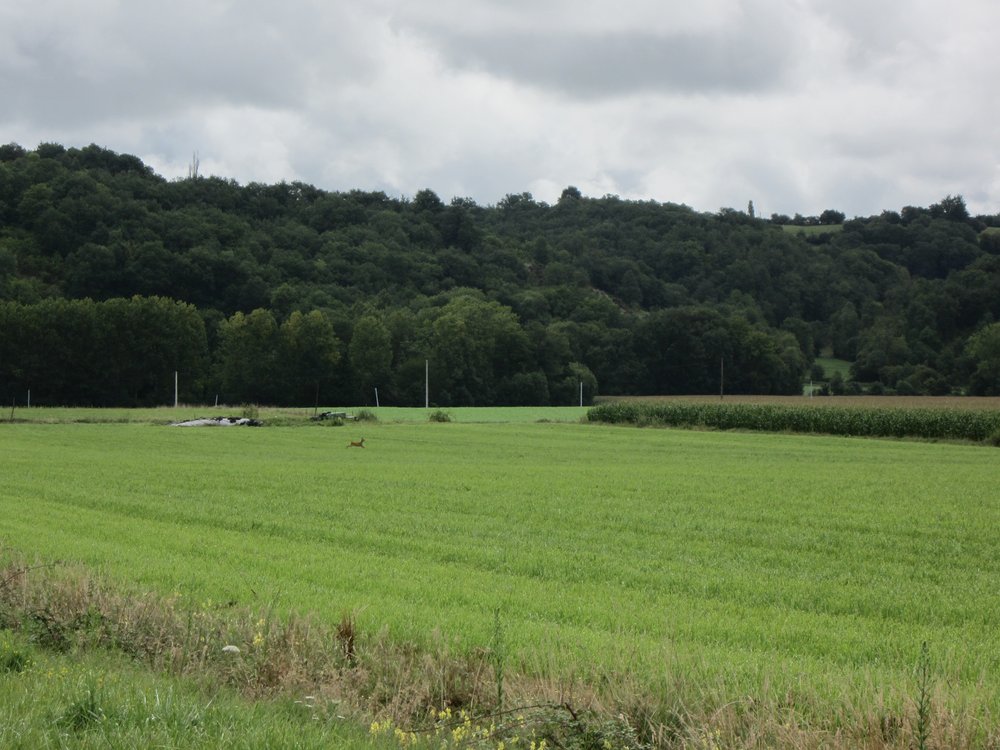
I come to a stand of trees. I have been hearing woodpeckers on this trip, but had yet to lay eyes on a bird. There was a time when I wasn’t fond of the woodpecker in Estampes, as they drilled holes in our wooden shutters, slowly destroying them. But now, of course, the woodpecker—a favorite. And there in this small area of dense oak trees, with its bright red flanks is the great spotted woodpecker (wish I had a photo!). Soon after in a field I spy more cattle egret, and one lone grey heron (very much like our blue heron) hunting in a field.
I pass three farmhouses, all beautifully fixed up, new shutters still closed on this Sunday morning. The tractors sit idle; not even the resident dog is there to bark at me as is usually the case. A few collared doves flutter about.
These roads I’m walking are the same roads I taught my niece and nephew to drive on. They were perfect learning roads in that 99% of the time there are no other cars. The downside is that when there was a car, there was little room for two cars to pass. So Alice or Thomas would stop, let me take over the wheel as I inched by the other car. On both sides dramatic ditches threatened to swallow a car.
I spy a hen harrier, grey-white high on a pole, then it swoops off. In a field to my right, a deer, the fifth one I’ve seen on this walk. I have seen deer in the past, but not so many. So the question is: are there more deer, or am I simply seeing them?
My return is quiet until a falcon comes zipping in overhead and slams into a magnolia tree. There’s a rumpus of squawks, then quiet. The falcon got its meal.
And I’m thinking about my lunch as well. So I drive into Mielan, the nearest town to Estampes, where there is a small Sunday market. I tell the melon man from Lectour that I want three melons, one for tonight and two for Monday. He numbers them in black ink so I’ll know which one is ripest.
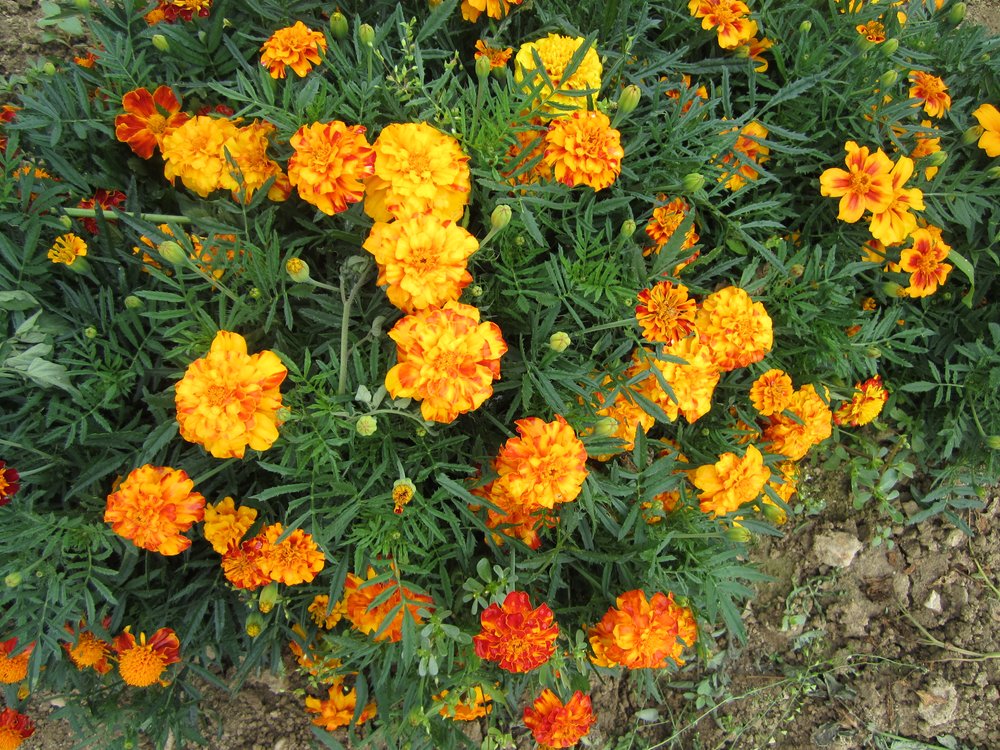
Bicycling the Gers
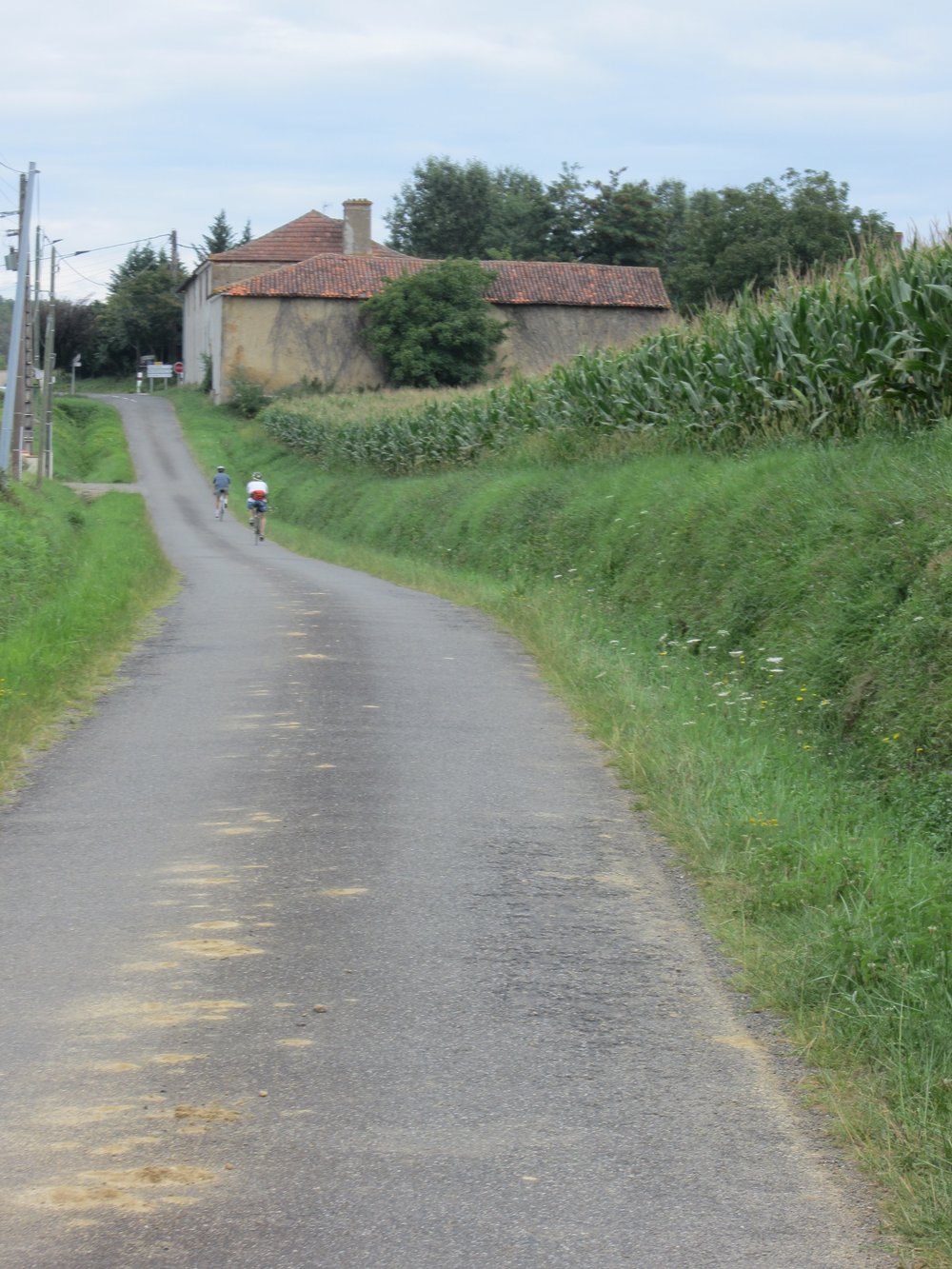
I saw the Harrier hovering over a wide field. It looked like it was suspended from the sky itself, staying miraculous in place as it targeted the ground. There was a glint of red, and a fanned tail. Then it dropped, like a ball dropping from the sky and vanished into the grass. I figured it would take a while for it to conduct its killing business so I bicycled on, not wanting to keep my sister and brother-in-law waiting too long.
We all shift into low gears as we prepare for the steep uphill ride that will take us up and over into the neighboring valley. The road is narrow, one-lane, gravelly, and winding. As we bike—slowly—I admire the pink and white cosmos in bloom by the side of the road, the queen anne’s lace that spreads across fields, and the acacia trees with their wispy red flowers. To our left, in the distance, we see the outline of the Pyrenees, especially the dramatic rise of the Pic du Midi. The houses of Antin thin and we’re soon surrounded by woods. There is a false summit, with a miniature valley positioned high in the hills. A few houses sprinkle the landscape, so isolated from the rest of the world. “It’s these inter-valley communities that interest me,” Becky says. And me too. The people who live here speak their own patois, live with little contact with their neighbors. It’s amazing to think of the isolation in such a busy country. Every small farm house that we pass has its own odor depending on what they are raising: Geese and ducks, an odor that is sharp in the back of the nose; beef cows, a flatter smell that mixes with the earth; milk cows, all sweetness.

I saw the Harrier hovering over a wide field. It looked like it was suspended from the sky itself, staying miraculous in place as it targeted the ground. There was a glint of red, and a fanned tail. Then it dropped, like a ball dropping from the sky and vanished into the grass. I figured it would take a while for it to conduct its killing business so I bicycled on, not wanting to keep my sister and brother-in-law waiting too long.
We all shift into low gears as we prepare for the steep uphill ride that will take us up and over into the neighboring valley. The road is narrow, one-lane, gravelly, and winding. As we bike—slowly—I admire the pink and white cosmos in bloom by the side of the road, the queen anne’s lace that spreads across fields, and the acacia trees with their wispy red flowers. To our left, in the distance, we see the outline of the Pyrenees, especially the dramatic rise of the Pic du Midi. The houses of Antin thin and we’re soon surrounded by woods. There is a false summit, with a miniature valley positioned high in the hills. A few houses sprinkle the landscape, so isolated from the rest of the world. “It’s these inter-valley communities that interest me,” Becky says. And me too. The people who live here speak their own patois, live with little contact with their neighbors. It’s amazing to think of the isolation in such a busy country. Every small farm house that we pass has its own odor depending on what they are raising: Geese and ducks, an odor that is sharp in the back of the nose; beef cows, a flatter smell that mixes with the earth; milk cows, all sweetness.
Soon, we are sailing downhill, the breeze cooling the sweat under my helmet. We stop at the bottom of the hill to sit on a bench by l’Arros, a stream that flows out of the Pyrenees. We’re in the town of St. Sever, known for its Abbey.

My grandmother loved taking this road through the woods to visit Villec
At a turn in the road, Olivier and Becky are waiting for me, though I had told them to go on, so I could stop and look at birds. They are snacking on blackberries, growing by the side of the road. And, Becky wanted to be sure that I saw the lamas in the field, napping in the sun. Lamas, like the donkey, are new to the area.
Becky leaves her bike and wanders to the side of the road to pee. She unzips her pants, and begins to crouch when she leaps into the air, screaming. In all the acres of land, in all the miles of road, she has decided to crouch to pee, right over this:
